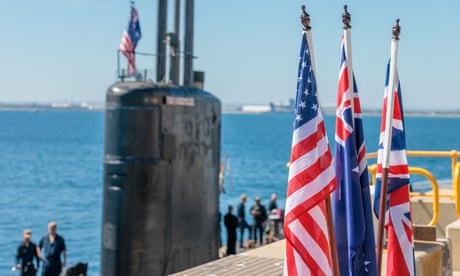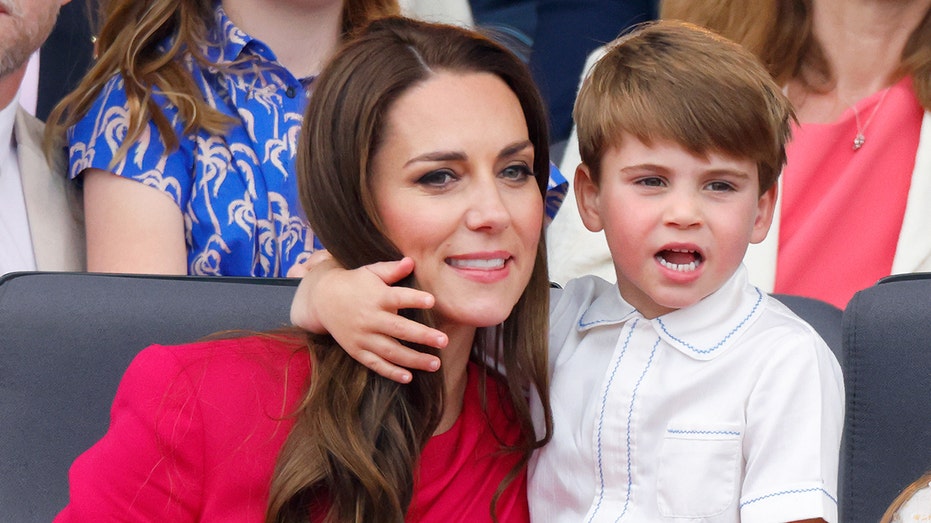- by foxnews
- 04 Feb 2025
Australia’s $3bn Aukus bill to boost US and UK industry may go even higher
Australia’s $3bn Aukus bill to boost US and UK industry may go even higher
- by theguardian
- 22 Mar 2023
- in news

Australian taxpayers may end up spending more than the $3bn initially announced to boost the submarine industrial capacity of the US and the UK under the Aukus deal, a minister has revealed.
The minister for defence industry, Pat Conroy, confirmed there was "scope for additional funding" beyond the first four-year budget period, with the exact amount to depend on negotiations with the two countries.
In an interview with Guardian Australia, Conroy also warned it would be "a grave mistake" to assume the government-owned shipbuilder ASC would automatically get the contract to build the British-designed nuclear-powered submarines.
The Albanese government continues to promise to build the submarines in Osborne in South Australia but Conroy said there was "real scope to explore who is the best builder" as part of a strategy to be developed over the next 12 to 18 months.
The comments indicate a raft of decisions remain outstanding in the wake of the announcement in San Diego of a multi-decade plan for the US and the UK to help Australia acquire up to eight nuclear-powered submarines.
This week Labor MPs started to question aspects of the program, including how to fund the projected overall cost of up to $368bn by the 2050s, prompting the Coalition to demand that Anthony Albanese "unify his party".
One of the most sensitive decisions relates to Australia offering about $3bn over the next four years to boost the submarine sustainment and production capacity of the other two Aukus countries - mostly the US.
Conroy acknowledged the funding was "controversial" but said it would address "critical choke points" in the US supply chain. This "downpayment" would give the US confidence to sell Australia at least three Virginia-class submarines in the 2030s, with the option of a further two.
"The only way the United States will support us buying Virginia-class submarines is [if] they have sufficient for their needs," he said.
Conroy said these submarines were needed fill a capability gap that he blamed on "10 years of chopping and changing" under the Coalition, including the abandoned Japanese and French submarine options.
When pressed, Conroy confirmed the government was likely to provide "additional funding" to boost overseas production lines beyond the four-year budget period, known as the "forward estimates".
"We envisage that there'll be a small amount post-forward estimates," he said.
"The reason I'm not disclosing it is [because] that is the area where there is further negotiation, both with the United States and the United Kingdom, but I can reiterate the vast majority of it is in the forward estimates."
This would not represent a cost blowout because the further amount was already included in the $50bn to $58bn prediction for the entire Aukus project over the next 10 years, Conroy said.
The final phase of the plan is to build the "SSN-Aukus" - a nuclear-powered submarine based on a British design and incorporating US technology - at the Osborne shipyard in Adelaide by a yet-to-be-selected company.
"I think that it's unlikely that we'd have a full-blown competitive tender process where you're asking for something off-the-shelf, because this is a very niche thing to do, but there's a real scope to explore who is the best builder and there's plenty of options," Conroy said.
"BAE obviously build the British submarines. They could establish an Australian entity to build Australian submarines like they've done for the Hunter-class frigates. There could be an alliance structure between ASC and one of those other builders, or the UK and US builders could come in on an alliance structure."
The government's strategy is likely to involve an Osborne precinct-wide approach, with workers transferring between entities depending on production patterns of a range of projects, including the life-of-type extension of the Collins-class submarines, the Hunter-class frigates, and the SSN-Aukus.
By transferring between projects, workers would also build up their skills. While construction of the SSN-Aukus is slated to start by the end of the 2020s, the first such boat will not be provided to the Royal Australian navy until the early 2040s.
This would be about five years after the first UK-built SSN-Aukus was scheduled to enter into that county's service, in an attempt to reduce risk surrounding the new design, Conroy said.
"The first of type of any new class, particularly a nuclear-powered submarine, is the riskiest - that's the one that is the hardest to deliver," he said, adding: "Having that half-a-decade gap will really give us a lot of comfort that we can iron out those problems."
Conroy said Aukus was "a huge national endeavour" that would involve "training thousands of Australians for these jobs".
He vowed to reassure any Labor caucus members asking "legitimate questions" after the Fremantle MP, Josh Wilson, told parliament he was "not completely convinced that nuclear-propelled submarines are the only or best answer to our strategic needs".
With Wilson also raising concerns about nuclear waste and proliferation implications, Conroy said: "We've got a very intelligent party room, and they're asking questions, and to be quite frank, I understand why they're asking those questions.
"This is the most significant industrial endeavour this country has ever attempted. That is why we need to give people confidence we have a plan and have thought through how to deliver it."
The Labor MPs Libby Coker and Michelle Ananda-Rajah - who asked questions at Tuesday's caucus meeting - later voiced support for the government's plan.
- by foxnews
- descember 09, 2016
Travelers flock to top religious landmarks deemed 'most Instagrammable'
Travelers visiting religious landmarks across the world may see a photo opportunity that's worthy to share on social media. Here are 10 popular spots, plus some attractions in the U.S.
read more


